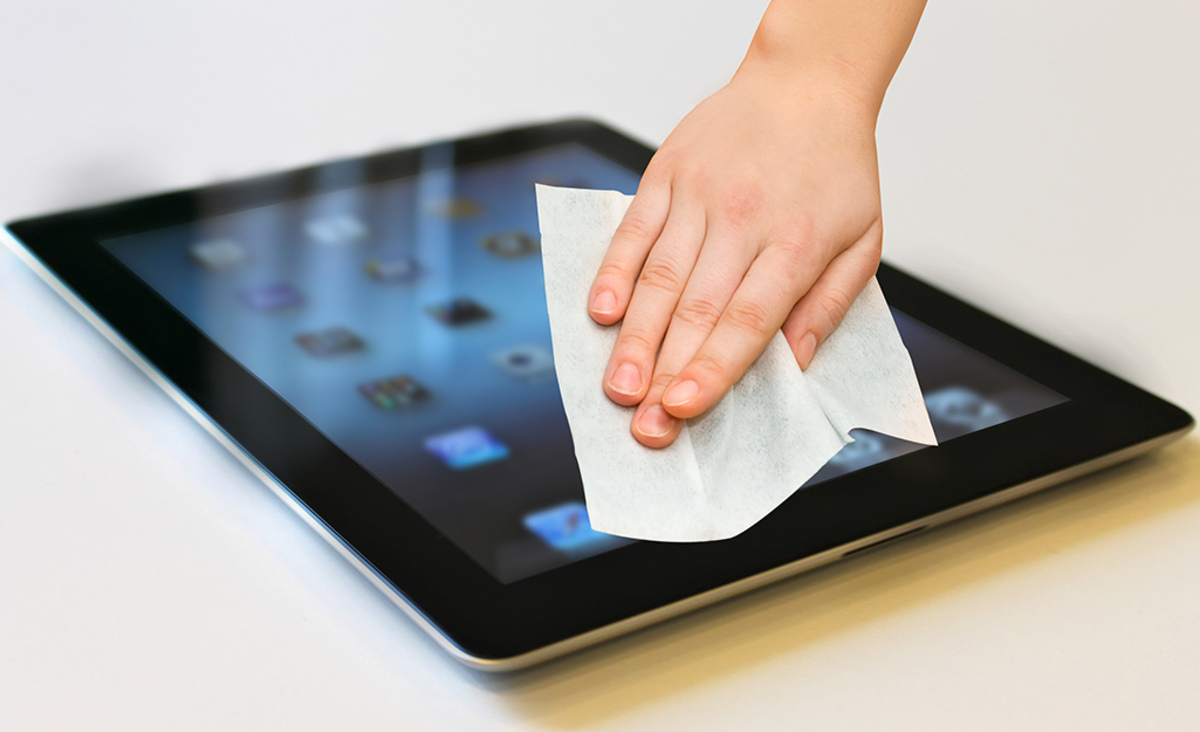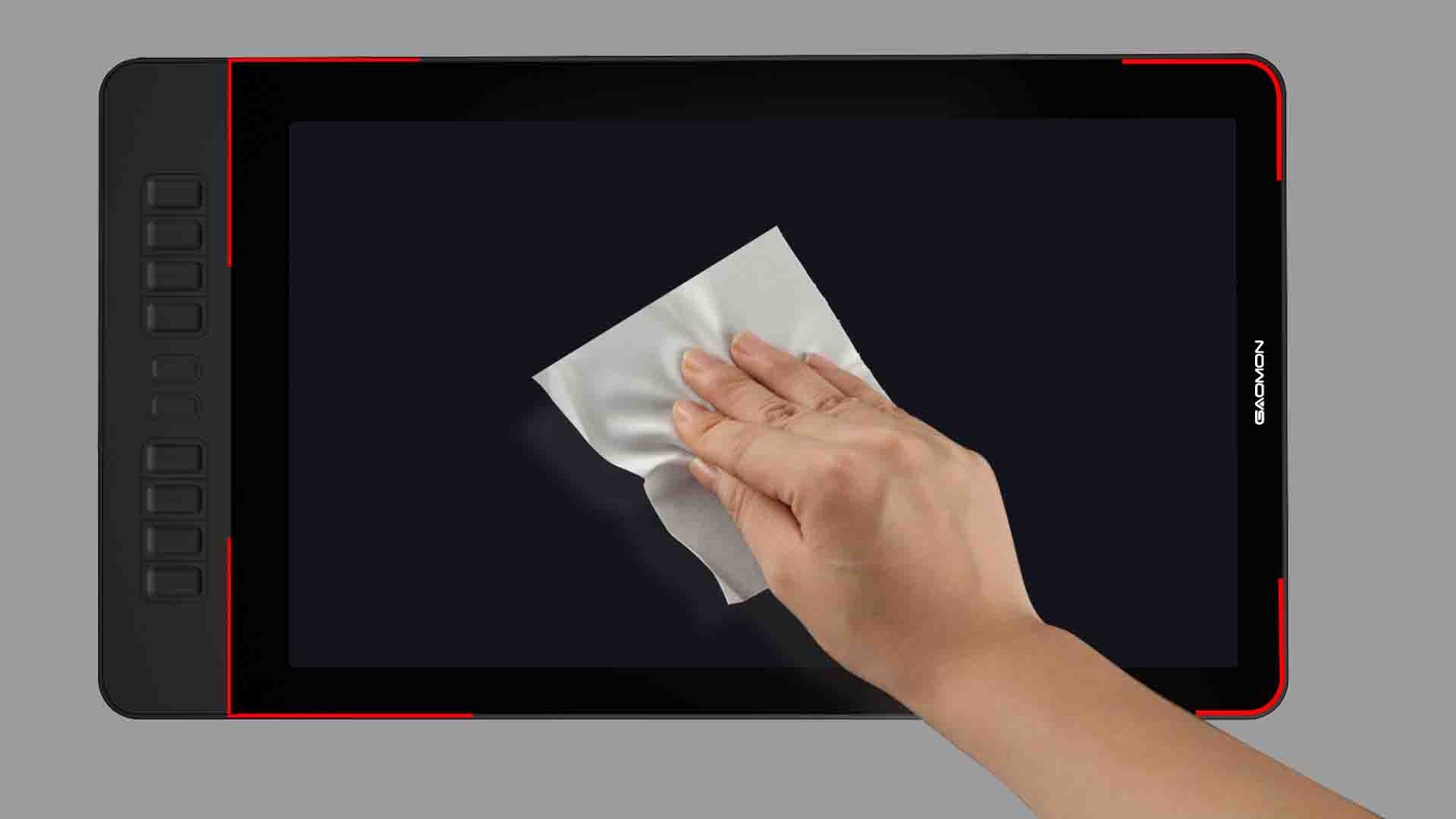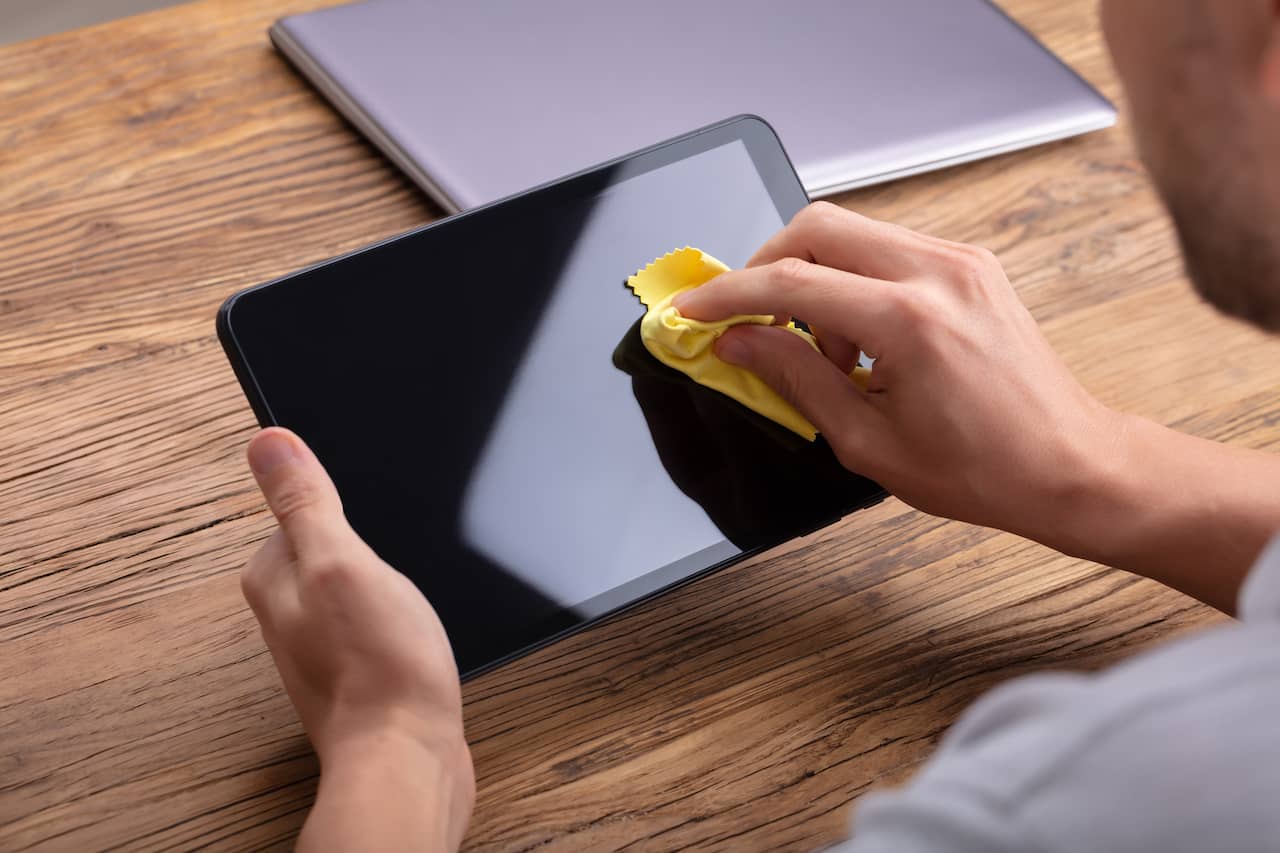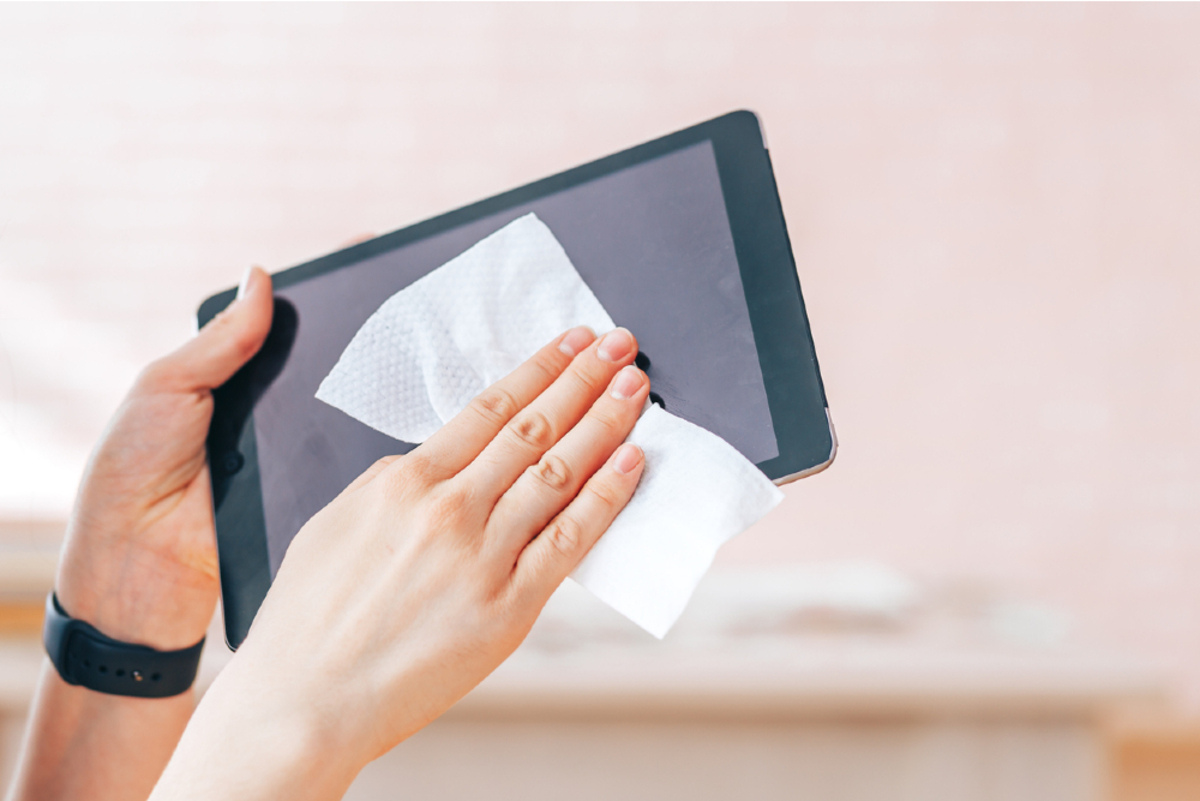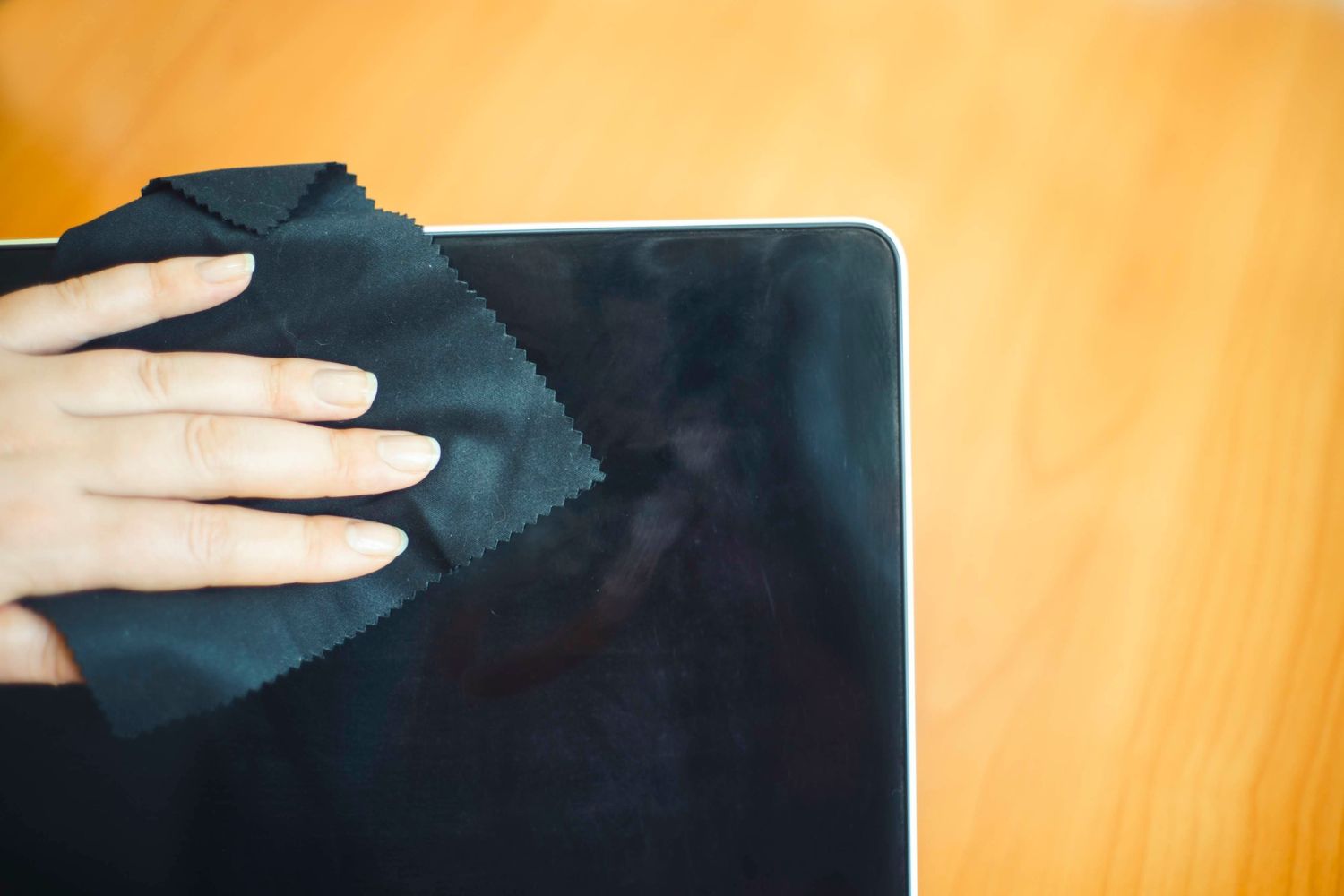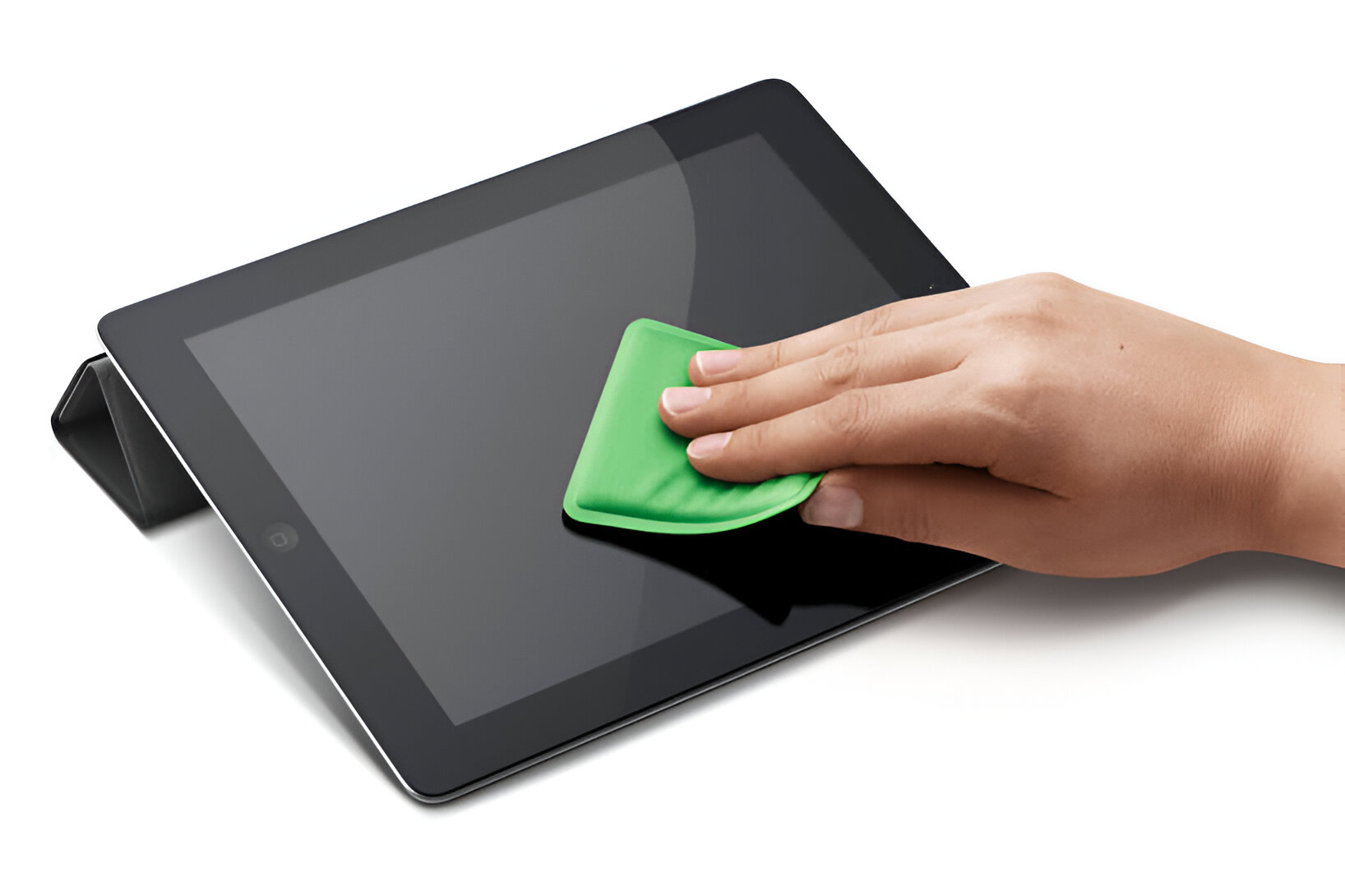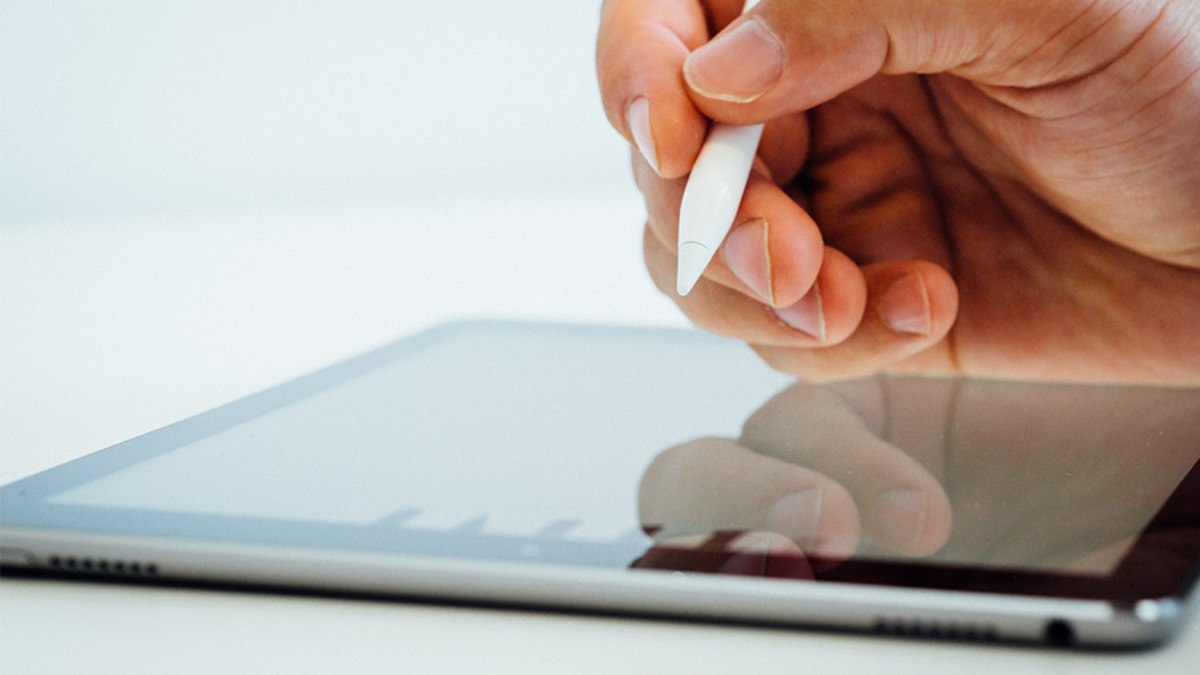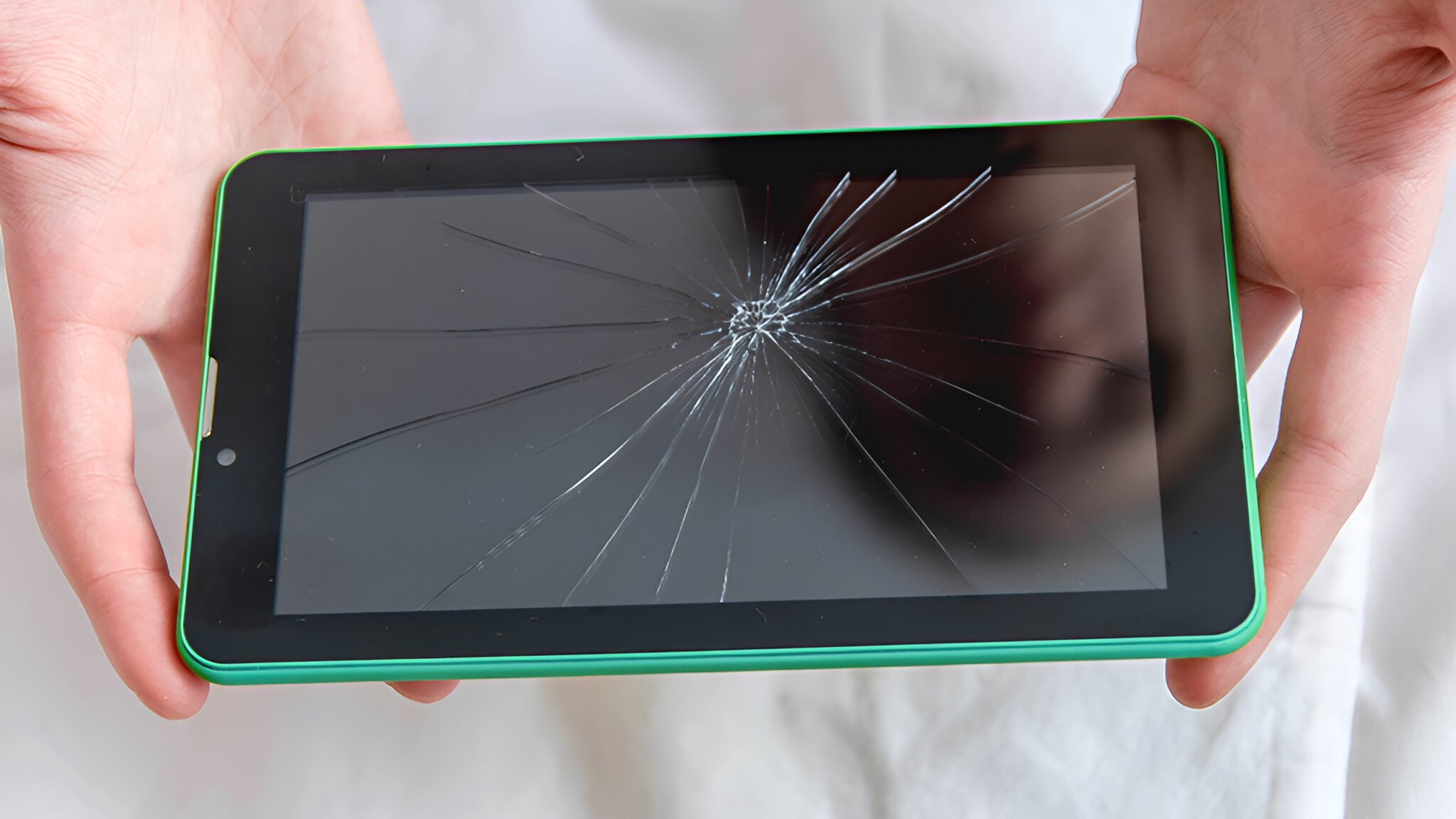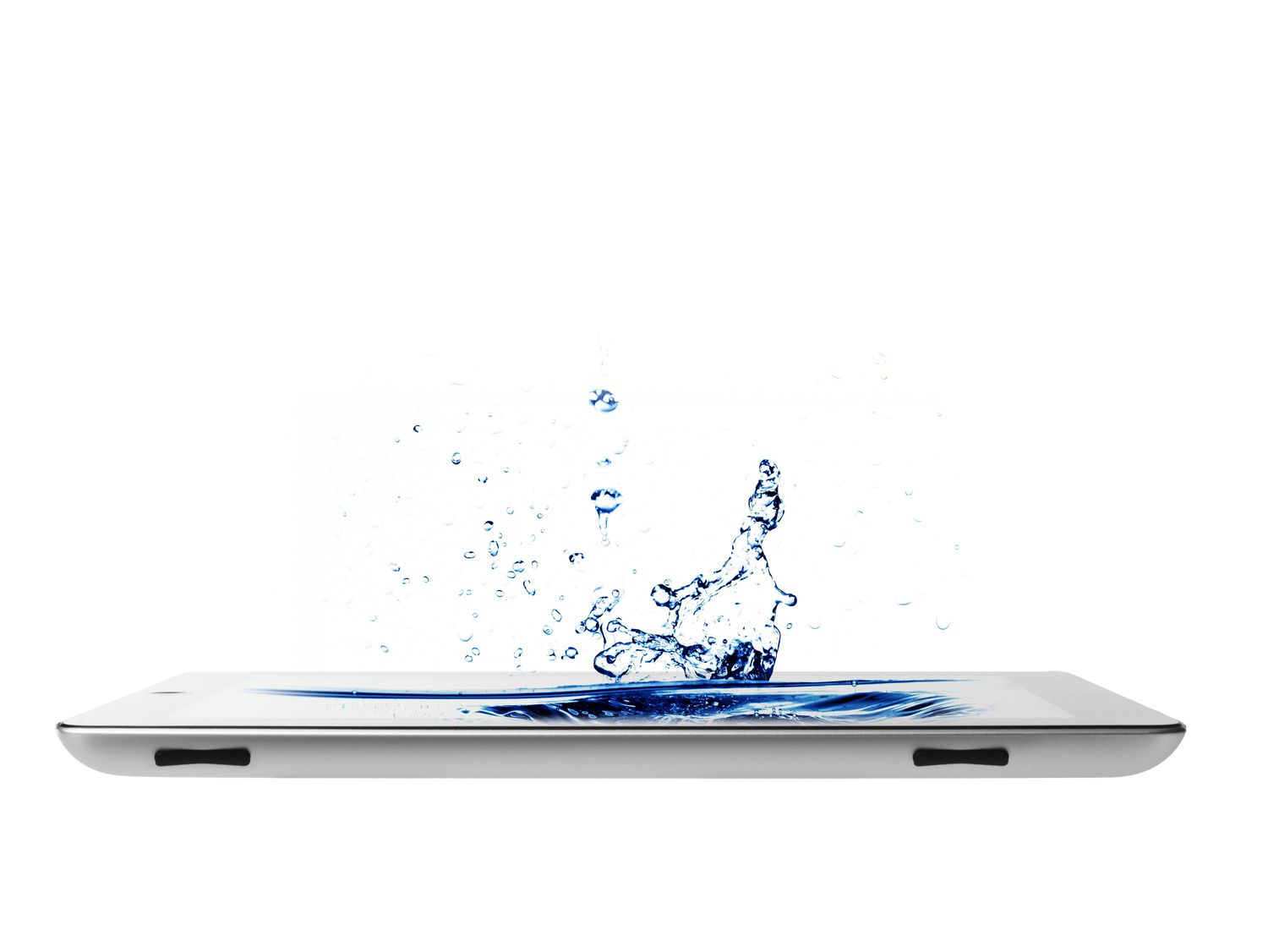Introduction
Welcome to the digital age, where tablets have become an integral part of our daily lives. Whether you use your tablet for work, entertainment, or communication, one thing is certain – its screen is a vital component that requires regular cleaning. A clean tablet screen not only enhances the visual experience but also ensures optimal performance and longevity of your device.
But why is it so important to clean your tablet screen? Well, apart from the obvious benefits of a smudge-free and crystal-clear display, regular cleaning helps to remove fingerprints, dust, and dirt that can accumulate over time. These particles can not only impair the visibility of your screen but may also interfere with touch responsiveness.
Now, before we delve into the safe and effective ways to clean your tablet screen, let’s address what not to use. It’s crucial to avoid using harsh chemicals, abrasive materials, or excessive moisture as they can damage the delicate surface of your tablet’s screen. Using the wrong cleaning agents can result in permanent scratches or discoloration, rendering your device unsightly and potentially affecting its functionality.
Fortunately, there are several safe and effective options available to clean your tablet screen. In this article, we will explore these options in detail, allowing you to make an informed decision on the best method for your device. So, let’s get started on keeping your tablet screen sparkling clean!
Why is it important to clean your tablet screen?
Keeping your tablet screen clean is essential for several reasons. First and foremost, a clean screen enhances your viewing experience. When your screen is free from smudges, fingerprints, and dirt, you can enjoy crisp, vibrant, and true-to-life colors, improving the overall visual quality of your device.
Regularly cleaning your tablet screen not only improves its appearance but also ensures optimal performance. Over time, dust and dirt particles can accumulate on the screen’s surface, affecting touch sensitivity and responsiveness. By keeping the screen clean, you can ensure smooth navigation and precise input, whether you’re tapping, swiping, or using a stylus.
Furthermore, a clean tablet screen promotes longevity and durability. Accumulated dirt, grime, and oils can gradually wear down the screen, leading to scratches and damage. By practicing proper cleaning techniques, you can help prolong the lifespan of your device’s screen, ensuring that it remains in excellent condition for years to come.
Another crucial reason to clean your tablet screen is for hygiene purposes. Our hands come into contact with various surfaces throughout the day, and we unknowingly transfer dirt, bacteria, and germs onto our screens. Regular cleaning helps eliminate these harmful contaminants, reducing the risk of spreading bacteria or infections.
For those who use their tablets for work or study, a clean screen is especially important. A clear and smudge-free surface allows you to focus on your tasks without distractions, ensuring maximum productivity. Additionally, if you frequently share your tablet with others, such as during presentations or meetings, a clean screen creates a professional and polished impression.
Lastly, maintaining a clean tablet screen can have a positive impact on resale value. If you plan to upgrade or sell your device in the future, a well-maintained screen can significantly increase its appeal and value. Potential buyers are more likely to be attracted to a device that shows care and attention to detail.
In summary, cleaning your tablet screen is important to enhance your viewing experience, ensure optimal performance, promote durability, maintain hygiene, boost productivity, and increase resale value. By incorporating regular screen cleaning into your device maintenance routine, you can enjoy a pristine and functional tablet for years to come.
What not to use to clean your tablet screen
When it comes to cleaning your tablet screen, it’s crucial to be aware of what not to use. Using the wrong cleaning agents or methods can cause irreversible damage to your device’s screen, compromising its functionality and appearance. Here are some things you should avoid:
- Harsh chemicals: Avoid using harsh chemicals such as ammonia, bleach, or window cleaners. These substances can be too abrasive for the delicate screen surface and may cause discoloration or etching.
- Abrasive materials: Stay away from rough or abrasive materials like paper towels, tissues, or regular towels. These can scratch or leave tiny fibers on the screen, impairing its clarity and touch responsiveness.
- Excessive moisture: While it’s important to clean your screen, excessive moisture can be harmful. Avoid using excessively damp cloths or spraying liquid directly onto the screen, as it can seep into the device and damage its internal components.
- Scratchy objects: Be careful not to use any sharp or scratchy objects, such as keys or metal tools, to clean your tablet screen. These can leave permanent marks or scratches on the surface.
It’s crucial to remember that your tablet screen is made of sensitive materials that require gentle care. Using any of the above-mentioned items can cause irreparable damage, leading to costly repairs or the need for a screen replacement.
Additionally, it’s worth noting that some manufacturer warranties might become void if the screen is damaged due to improper cleaning methods. Therefore, it’s essential to be cautious and follow the recommended guidelines for cleaning your tablet screen.
Now that we know what not to use, let’s explore the safe and effective options for cleaning your tablet screen in the next section.
Safe and effective options to clean your tablet screen
Fortunately, there are several safe and effective options available to clean your tablet screen without causing any damage or compromising its functionality. Let’s explore these options:
- Microfiber cloth: A microfiber cloth is an excellent choice for cleaning your tablet screen. These soft, lint-free cloths are specifically designed for delicate surfaces and can effectively remove fingerprints, smudges, and dust. Gently wipe the screen in a circular motion to lift away any dirt particles.
- Distilled water: In some cases, using distilled water can be sufficient to clean your tablet screen. Dampen a microfiber cloth with a small amount of distilled water and gently wipe the screen. Be sure to avoid excessive moisture to prevent any liquid from seeping into the device.
- Isopropyl alcohol (70% solution): If your tablet screen requires a deeper clean, you can use a mixture of isopropyl alcohol and distilled water. Mix equal parts of isopropyl alcohol (70% solution) and distilled water in a spray bottle. Lightly spray the solution onto a microfiber cloth and gently wipe the screen in a circular motion.
- Pre-moistened screen wipes: Another convenient option is to use pre-moistened screen wipes that are specifically formulated for cleaning electronic devices. These wipes are individually wrapped, making them portable and easy to use. Simply wipe the screen with the pre-moistened wipe, following the manufacturer’s instructions.
It’s important to note that whichever method you choose, always ensure that your tablet is powered off before cleaning the screen. This will prevent any accidental inputs while you’re cleaning, as well as reduce the risk of electrical damage.
Before using any cleaning solution or wipe, it is recommended to test it on a small, inconspicuous area of the screen first to ensure compatibility and avoid any potential damage.
Remember to never spray liquid directly onto the screen, as it can cause moisture damage. Always apply the cleaning solution or moisture to a cloth first, and then gently wipe the screen. Avoid excessively applying pressure to the screen, as this can also lead to damage.
By using these safe and effective options, you can keep your tablet screen clean and free from smudges, fingerprints, and dirt, ensuring a clear and enjoyable user experience.
Microfiber cloth
A microfiber cloth is a versatile and widely recommended tool for cleaning your tablet screen. It is made from synthetic fibers that are incredibly fine and soft, making it gentle enough to clean delicate surfaces without causing scratches or damage.
When using a microfiber cloth to clean your tablet screen, start by turning off your device to avoid accidental inputs. Gently wipe the screen in a circular motion, applying soft and even pressure. The microfiber cloth effectively lifts away fingerprints, smudges, and dust particles, leaving your screen clean and streak-free.
One of the advantages of using a microfiber cloth is its reusability. After each use, simply shake off any loose particles and fold or roll the cloth neatly for storage. You can also wash the cloth with mild soap and warm water when it becomes visibly dirty or starts to lose its effectiveness. Avoid using fabric softener or bleach, as these can deteriorate the cloth’s quality.
It’s important to note that when using a microfiber cloth, it should be dedicated solely for cleaning screens and other delicate surfaces. Using the same cloth for other purposes, such as cleaning household surfaces or wiping up spills, may introduce dirt, debris, or harsh chemicals that can damage your tablet screen.
Microfiber cloths are widely available and can be purchased online or at electronic or home improvement stores. It’s recommended to invest in a high-quality microfiber cloth to ensure the best cleaning results and durability.
In summary, a microfiber cloth is a safe and effective option for cleaning your tablet screen. Its soft, lint-free properties make it ideal for lifting away fingerprints, smudges, and dust without scratching or damaging the delicate screen surface. Remember to use gentle circular motions and avoid excessive pressure when using a microfiber cloth to clean your tablet screen.
Distilled water
Distilled water is a simple yet effective option for cleaning your tablet screen, especially when dealing with light smudges or dust particles. It is free from minerals and impurities, making it less likely to leave streaks or residue on the screen.
To use distilled water to clean your tablet screen, start by turning off the device to prevent any accidental interactions. Dampen a microfiber cloth with a small amount of distilled water. It’s important to avoid soaking the cloth or using excessive moisture, as this can damage the device. Gently wipe the screen in a circular motion, applying gentle and even pressure.
Using distilled water helps to remove fingerprints, smudges, and light dirt particles from the screen’s surface. It leaves your tablet screen clean and clear without introducing any harsh chemicals or causing any damage.
It’s important to note that distilled water should be used sparingly and only when necessary. Excessive moisture can potentially seep into the device and cause damage to its internal components. Remember to always use a slightly damp cloth rather than directly spraying water onto the screen.
Distilled water can be easily obtained from most supermarkets or drugstores. It is often found in the cleaning or pharmaceutical section. If you don’t have access to distilled water, you can also use filtered or purified water as an alternative, although distilled water is generally regarded as the best option due to its purity.
Remember that while distilled water is generally safe for most tablet screens, it is always prudent to check the manufacturer’s guidelines or consult the device’s user manual to ensure that it is a suitable cleaning method for your specific tablet model.
In summary, distilled water is a safe and effective option for cleaning your tablet screen, particularly for light smudges and dust. Its purity minimizes the risk of leaving streaks or residue on the screen, ensuring a clean and clear display. Use a slightly damp microfiber cloth and gentle circular motions to wipe away fingerprints and smudges, taking care to avoid excessive moisture that could damage your device.
Isopropyl alcohol (70% solution)
Isopropyl alcohol, commonly known as rubbing alcohol, is another effective option for cleaning your tablet screen, especially when dealing with stubborn smudges or sticky residue. It is a versatile cleaning agent that evaporates quickly, leaving behind a clean and streak-free surface.
When using isopropyl alcohol to clean your tablet screen, it’s important to dilute it with distilled water to create a 70% solution. This concentration strikes a balance between effective cleaning power and minimizing any potential damage to the screen’s coating. You can mix equal parts of isopropyl alcohol (70% solution) and distilled water in a spray bottle for convenience.
Start by turning off your tablet to prevent accidental inputs, and ensure that your microfiber cloth is slightly damp, not drenched. Lightly spray the diluted solution onto the cloth, then gently wipe the screen in a circular motion. Take care not to apply excessive pressure, as this can damage the screen.
Isopropyl alcohol effectively breaks down fingerprint oils, greasy residue, and other tough smudges, leaving your tablet screen clean and clear. Its quick evaporation ensures that your screen won’t stay wet for long, minimizing the risk of moisture damage.
While isopropyl alcohol is generally safe to use on most tablet screens, it’s important to check the manufacturer’s guidelines or consult the device’s user manual to ensure compatibility. Some screens, especially those with coatings or special finishes, may be more sensitive to alcohol-based solutions and may require alternative cleaning methods.
It’s worth noting that isopropyl alcohol should not be used on screens with anti-glare coatings, as it can potentially damage or remove the coating. In such cases, it’s best to refer to the manufacturer’s recommendations or seek professional cleaning services for anti-glare screens.
Isopropyl alcohol can be easily found at most drugstores or pharmacies. Look for the 70% concentration, as higher concentrations may be too strong and can damage the screen. Always ensure that the bottle is tightly sealed and stored in a cool and dry place.
In summary, isopropyl alcohol (70% solution) is a useful option for cleaning your tablet screen when dealing with stubborn smudges or residue. Dilute it with distilled water, apply it to a slightly damp microfiber cloth, and gently wipe the screen in circular motions. However, it’s important to check your tablet manufacturer’s guidelines and make sure it is suitable for your specific screen type before using this cleaning method.
Pre-moistened screen wipes
Pre-moistened screen wipes are a convenient and hassle-free option for cleaning your tablet screen. These wipes are specially designed to effectively remove fingerprints, smudges, and dirt without the need for additional cleaning agents or tools.
Using pre-moistened screen wipes is straightforward. Simply take a wipe out of the packaging and unfold it. Gently wipe the screen in a circular motion, ensuring that you cover the entire surface. These wipes are designed to be non-abrasive, so you can apply gentle pressure without worrying about scratching the screen.
One of the advantages of using pre-moistened screen wipes is their portability. Individually wrapped and sealed, these wipes can be conveniently carried in your bag or pocket, making them ideal for on-the-go cleaning. They are especially useful for those who travel frequently or need quick and efficient screen cleaning options.
When choosing pre-moistened screen wipes, it’s essential to select ones that are specifically formulated for electronic devices. These wipes are typically free from harsh chemicals and are safe to use on sensitive screen surfaces. Avoid using regular household cleaning wipes or disinfectant wipes, as they may contain ingredients that can damage the screen or leave residue.
It’s important to note that pre-moistened screen wipes are generally single-use and disposable. Once you’ve finished cleaning your tablet screen, remember to discard the used wipe responsibly and avoid flushing it down the toilet.
Keep in mind that while pre-moistened screen wipes are a convenient solution, they may not be as economical as other cleaning options. If you frequently clean your tablet screen, using a microfiber cloth or homemade solutions may be more cost-effective in the long run.
Pre-moistened screen wipes can be easily found at electronic stores, online retailers, and supermarkets. Look for reputable brands and read customer reviews to ensure the quality and effectiveness of the wipes.
In summary, pre-moistened screen wipes offer a convenient and effective way to clean your tablet screen. Simply take a wipe, gently wipe the screen, and dispose of the used wipe. They are portable and ideal for on-the-go cleaning. However, remember to choose wipes specifically formulated for electronic devices and dispose of them responsibly after use.
Tips for cleaning your tablet screen properly
Cleaning your tablet screen requires care and attention to ensure that you achieve the best results without causing any damage. Here are some useful tips to keep in mind:
- Turn off your tablet: Before you start cleaning, always remember to turn off your tablet. This prevents accidental inputs and ensures your safety during the cleaning process.
- Use gentle motions: When cleaning your tablet screen, use soft and gentle motions. Applying excessive pressure can damage the screen or push liquid into the device. Instead, opt for light and even pressure to remove any smudges or dirt effectively.
- Focus on problem areas: Pay special attention to areas that tend to accumulate fingerprints and smudges, such as the center of the screen or around the edges. Spend a little extra time gently wiping these areas to ensure they are thoroughly cleaned.
- Don’t spray liquid directly on the screen: Whether you’re using a cleaning solution or distilled water, it’s important to avoid spraying it directly onto the screen. Instead, apply the cleaning agent onto a microfiber cloth and then gently wipe the screen. This prevents excessive moisture from entering the device.
- Avoid using excessive moisture: When using any liquid to clean your tablet screen, it’s crucial to use a minimal amount. Excessive moisture can seep into the device and potentially damage its internal components. Dampen the cloth slightly, but don’t saturate it.
- Inspect for debris on the cloth: Before cleaning, always check your microfiber cloth for any debris or particles that could scratch the screen. Shake it out or wash it if necessary, ensuring that it is clean and free from any potential contaminants.
- Follow the manufacturer’s guidelines: Different tablet models may have specific recommendations for cleaning their screens. It’s essential to refer to the manufacturer’s guidelines or consult the device’s user manual to ensure that you are using the appropriate cleaning methods and products for your tablet.
By following these tips, you can clean your tablet screen properly while minimizing the risk of damage. A clean and well-maintained screen enhances your viewing experience and prolongs the lifespan of your device.
Conclusion
Keeping your tablet screen clean is crucial for maintaining its visual quality, responsiveness, and longevity. By following safe and effective cleaning methods, you can enjoy a smudge-free, crystal-clear display that enhances your overall tablet experience.
Throughout this article, we have discussed various options for cleaning your tablet screen. Whether you choose to use a microfiber cloth, distilled water, isopropyl alcohol (70% solution), or pre-moistened screen wipes, it’s important to always prioritize the safety of your device. Avoid using harsh chemicals, abrasive materials, or excessive moisture that can damage the screen or impact its functionality.
Additionally, we provided tips for cleaning your tablet screen properly, such as turning off your device, using gentle motions, and focusing on problem areas. These tips ensure that you effectively remove fingerprints, smudges, and dirt while minimizing the risk of damage.
Remember to check your tablet’s manufacturer guidelines or consult the user manual for any specific cleaning recommendations tailored to your device. Following the manufacturer’s guidelines ensures that you choose the right cleaning methods and products for your tablet’s unique screen type.
In conclusion, maintaining a clean tablet screen is essential for an optimal viewing experience and device performance. By incorporating regular cleaning into your tablet maintenance routine, you can enjoy a clear and vibrant display, improved touch responsiveness, and increased longevity of your device.
So, pick up your microfiber cloth, distilled water, or pre-moistened wipes, and start cleaning your tablet screen today. Your eyes and fingers will thank you!







